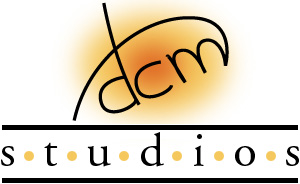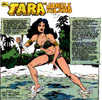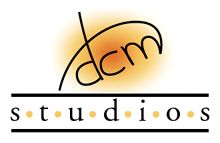


Not actually a very auspicious start... although my association with AC Comics would continue for some years, mostly in color separation and other production duties, this would be the last, as well as the first, story I would draw for them. Bill didn't (to put it mildly) care for muscles on women, and didn't appreciate my sometimes-not-so-subtle attempts to make the female characters look like they were capable of the astounding feats of strength they were performing.
Artwork ©1983 Americomics. Tara on Jungle Island and her distinctive likeness are trademarks of Americomics.
Charles and I discovered common areas of interest in comics (of course), animation, and the 60's science-fiction TV shows we both grew up on. When we decided to collaborate on a new comic for his publishing company, Outside Comics, however, it was our interest in women's professional wrestling that would prove to be our inspiration. G.L.O.W. (Gorgeous Ladies Of Wrestling) was in its first season at the time, and after an encouraging (but ultimately abortive) attempt to publish an official G.L.O.W. comic, we finally hashed out an original concept, Maxwell Madd and His Wrestling Women!
Maxwell Madd, a small-time hustler and professional hard-luck case, learns that he's "inherited" a quartet of women wrestlers from his recently deceased uncle Eugene. Max stands to inherit the elder Madd's considerable fortune... IF he can manage the wrestlers and turn a profit within five years. Thus the stage is set for the outrageous and sometimes wacky adventures of Max, Peggy Greystep, the Amazon, La Purda and the Blonde Bombshell. Not all of their opponents would face them in the squared circle, of course, and some might bear strange resemblances to classic movie monsters...
At least, that was the idea. But almost-non-existent promotion led to minuscule sales, and the book was canceled after three issues. Which was sad... this was a fun book to draw, and one I'd like to see revived in some form.
As for the character designs: Charles had definite ideas for how he wanted three of the wrestling women to look, but he gave me a free hand in creating the fourth wrestler. I'll let you guess which one was my design. (Hint: my favorite G.L.O.W. Girl was Olympia...)
Maxwell Madd and his Wrestling Women TM and ©1989 Charles Treadwell
By the time Maxwell Madd and his Wrestling Women! had ceased publication, I had published two issues of my own small-press series, Satin Steele. I'd traded copies of my book for issues of comics by other small-pressers; one of these was Steve Roman, who'd created a supernatural female character, a succubus named "Lorelei". Like Charles, Steve's talents were greater as a writer than as an artist, and likewise not averse to letting a better artist draw their stories. Steve was impressed enough with my work to cajole me into being the artist on Lorelei when he launched the series as a mainstream comic. Lorelei managed to last for six issues before the inevitable cancellation. Steve had once described Lorelei as "Vampirella the way Dave (Cerebus) Sim would write it"; characters and relationships would be more the focus of the series than the "scary stuff". Unfortunately (as I'd discussed with him on more than one occasion), Steve seemed to have picked up Sim's, shall we say, leisurely storytelling pace; we were only halfway through the origin of Lorelei when the series died, and I never got to draw the title character at all within the story! I believe the book might've succeeded, or at least run longer, if the origin could've wrapped in three issues and Lorelei could then start having more adventures by the fourth. Despite that, though, I'd welcome the chance to work with Steve again, because he is a very talented writer who is woefully unappreciated by the comics field (as well as his employer).
Update, August 2005: The six issues have just been reprinted in trade paperback (TPB) form as Lorelei: Building the Perfect Beast Vol. 1, with a never-before-published prologue illustrated by Kevin Tuma. This is Steve's re-entry to publishing; he intends to continue the adventures of Lorelei as a series of TPBs. We haven't talked (yet) about my returning as artist.
So why haven't my own creations been published? Well, Satin Steele has been shopped around to several publishers. I deliberately avoided DC and Marvel as possible "homes" for Satin Steele because they would want to own the concept outright; I can't give up that control. Unfortunately, most of the smaller publishers who've expressed interest in Satin Steele have been so small I wasn't sure I'd see any return from their publication!
What about forming my own publishing company? The experience of working with Outside and Starwarp taught me the pitfalls of self-publishing for the mainstream. As a married homeowner with a full-time job and about as much security as anyone can reasonably expect these days, I'm frankly very frightened of risking all this by quitting my job and devoting all my time and resources on a publishing venture that could most likely fail, in a comics market that itself seems to teeter on the edge of collapse.
Now, with the Internet and especially the World Wide Web, I have a tool for reaching a potential audience of millions who can sample my work from the comfort and privacy of their own homes. Now if I can just find a way to make some cash from it...!
Home page
©2000-2005 David C. Matthews (except as otherwise indicated)

 My first professionally published work, a 4-page story penciled by me and written and inked by Bill Black, founder and publisher of Americomics (now known as AC Comics). It appeared in Americomics #2, June 1983. This also marks the first color appearance of AC Comics' jungle heroine that first appeared in Black's black-and-white Paragon Publications magazines.
My first professionally published work, a 4-page story penciled by me and written and inked by Bill Black, founder and publisher of Americomics (now known as AC Comics). It appeared in Americomics #2, June 1983. This also marks the first color appearance of AC Comics' jungle heroine that first appeared in Black's black-and-white Paragon Publications magazines.
 Tara would be a partial inspiration for one of my characters: Leenah of the Lions, who was really the first of my characters to sport a bodybuilder's physique. (It just made sense to me that someone, man or woman, who lived self-reliantly in an environment as difficult as the jungle, would develop such a muscular body.) Unfortunately, others were thinking along the same lines as me, and about six months after I drew my first sketches of Leenah, LH-Art's "Elsewhere Comics" published its first issue of Robin Ator's Kyra, about (you guessed it!) a muscular jungle girl. *sigh* Great minds think alike, I guess...
Tara would be a partial inspiration for one of my characters: Leenah of the Lions, who was really the first of my characters to sport a bodybuilder's physique. (It just made sense to me that someone, man or woman, who lived self-reliantly in an environment as difficult as the jungle, would develop such a muscular body.) Unfortunately, others were thinking along the same lines as me, and about six months after I drew my first sketches of Leenah, LH-Art's "Elsewhere Comics" published its first issue of Robin Ator's Kyra, about (you guessed it!) a muscular jungle girl. *sigh* Great minds think alike, I guess...

 It was around this time (1983 or so) that I would meet someone who would become one of my best friends. Charles Treadwell, like me a creative soul struggling for their big break in the comics field, was already publishing his comic "Scratch", the humorous adventures of an ordinary guy and the half-demon title character whose strange ways and equally odd assortment of friends and nemeses would conspire to make Kidmund Krebs' life... interesting.
It was around this time (1983 or so) that I would meet someone who would become one of my best friends. Charles Treadwell, like me a creative soul struggling for their big break in the comics field, was already publishing his comic "Scratch", the humorous adventures of an ordinary guy and the half-demon title character whose strange ways and equally odd assortment of friends and nemeses would conspire to make Kidmund Krebs' life... interesting.

